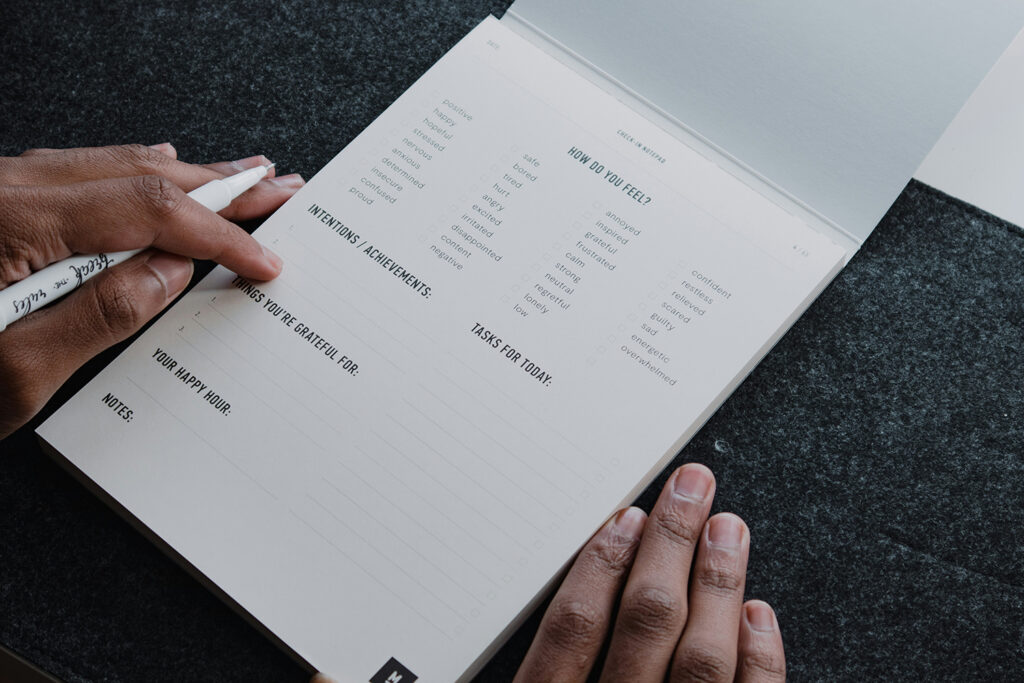Imagine, after a long, exhausting day, you’re lying in bed, tossing and turning, your mind racing with thoughts from the day and worries about tomorrow. Sound familiar? You’re not alone. In our quest for rest in our ever-busy lives, many of us find solace in the ancient practice of meditation—revived and repackaged for the modern world as guided sleep meditation. This technique isn’t just about finding peace in silence; it’s about being gently led by a soothing voice into a state of deep relaxation and, eventually, into the arms of Morpheus himself. But here’s the thing: not all guided sleep meditation experiences are created equal. The secret to unlocking the profound benefits of this practice lies in the approach. Whether you’re looking to unwind before bed, ease anxiety, achieve deeper goals, or make significant mind shifts, guided sleep meditation can help. Let’s explore how to personalize your routine to reap the maximum benefits.
1. Setting a Clear Goal
Before starting your meditation practice, first, it’s important to define your goals. Setting a clear goal will help you concentrate on the right meditation theme, motivate you to focus, and keep consistency, ultimately making your meditation practice more effective.

Make the most out of your meditation practice by reflecting on what you hope to achieve first. Ask yourself if you want to reduce anxiety levels, manage stress, foster positive thinking, or break a negative pattern in a specific area of your life. The more specific you are about your goal, the greater the benefits you’ll experience from your practice. Rather than jumping between different themes, it’s better to focus on one goal at a time and stick with it for at least a month before moving on to the next one.
2. Choosing the Right Narrator
The voice that guides you through meditation can greatly affect your level of relaxation. A narrator that resonates with you can make all the difference between a successful meditation session and one that doesn’t quite work. It can even influence your decision to stick with the practice. There are no specific rules for choosing a narrator; it’s all about personal preference. To find the right match, try sampling different narrators. Many platforms offer samples to help you decide if a narrator’s style suits you. Pay attention to how the voice makes you feel. If you experience any discomfort or annoyance, keep searching until you find a voice that soothes you. My advice is to test various options and trust your instincts.

3. Selecting the Right Recording
The ideal meditation recording should align with your goals and personal preferences, including length and thematic focus, i.e. to ease overthinking, to boost confidence, or to reduce anxiety. Whatever topic you choose, quality is paramount to prevent distractions and maintain a state of relaxation. Opt for recordings with clear, crisp audio. Poor sound quality can be distracting and counterproductive. Also, pay attention to the appropriate length. Many options exist, from a quick 5-minute de-stress to full 8-hour sleep tracks. Choose a recording that fits your available time and doesn’t feel rushed or overly lengthy. If you don’t know where to start, try beginning with a median of 30-50 minutes of recording for a sleep meditation session.
4. The Importance of Headphones

Headphones can really improve your meditation by blocking out noise and creating a more personal, immersive space. This isolation helps you focus and relax more deeply, especially during meditations with hypnosis or sound therapy that aim to keep your brain in a certain state throughout the session. When picking headphones for meditation, go for comfort since you’ll be wearing them for a while. Make sure they’re comfortable and stay in place, especially if you might fall asleep with them on.
5. Minding Your Surroundings and Pose
Your meditation practice’s success greatly depends on the environment you choose. A calm and quiet space with minimal interruptions can really enhance your experience, and finding a comfortable position is key. You can sit or lie down, but physical comfort is crucial as you may stay like this for a while. If you start meditating in an awkward position, you might even feel back discomfort the next day. For sleeping meditations, I recommend lying flat on your back in bed. Make sure your limbs aren’t crossed and your back is straight. Use cushions or blankets for support, and don’t hesitate to adjust your pose if you feel any discomfort.
6. The Key to Success: Consistency
Establishing a consistent routine is crucial for anyone trying to develop a successful meditation practice. When it comes to guided sleep meditation, practicing it nightly can significantly enhance its benefits, resulting in better sleep quality and fewer disruptions throughout the night.

It’s important to understand that the ultimate benefits of meditation are not instantaneous; they accrue over time, and the seeds you start planting now may take some weeks to flourish. Therefore, it’s vital to be patient and persistent in your practice, even if you don’t see immediate results. Consistency is key, and even a few minutes of meditation each night can make a significant difference in your overall well-being.
Bonus Point: Enhancing Effectiveness with Hypnosis
The night meditation with hypnosis is my absolute favorite kind. They are exceptionally effective because they combine two great techniques. Guided sleep meditation emphasizes relaxation and mindfulness, while hypnosis enhances the effectiveness of meditation by improving your focus and making you more open to positive suggestions. As a result, the mind can receive them more deeply. This makes it a killer combo if you are looking to tackle something more serious than merely falling asleep faster. Practical for people who are experiencing sleep disorders or stress-induced insomnia, it can also help you change negative self-talk into a positive one that lifts you up. So, whether you are looking for a way to improve your sleep or want to work on your mindset, I recommend this practice as a go-to option.

How It Works:
Hypnotic meditation uses guided imagery to encourage the listener to imagine calming scenes or experiences. This technique helps the listener relax and distracts their mind from stressors. Positive affirmations are used to reinforce self-esteem and combat negative thought patterns that may prevent relaxation and sleep. Hypnotic techniques lead to deeper levels of relaxation by encouraging the mind to let go of conscious control, allowing for spontaneous and effortless entry into sleep.
Finding Hypnotic Guided Meditations:
To find hypnotic guided meditations, look for recordings specifically designed with hypnotic elements. These are often labeled as such and can be found on platforms dedicated to sleep therapy and meditation. Professional guidance from a certified hypnotist or therapist who specializes in sleep meditation can also be beneficial, especially for those with specific issues like insomnia.
Safety and Efficacy:
While the combination of meditation and hypnosis is generally safe, it is important to ensure that such meditation’ sources are reputable and trustworthy, as the quality and intentionality behind the recordings play a crucial role in their effectiveness and safety.
As the Stars Align: Concluding Insights
Guided sleep meditation offers a pathway not only to better sleep and relaxation but also to rewiring your mindset and boosting self-esteem and confidence with positive guidance. Its effectiveness hinges on a thoughtful, personalized approach. By setting clear goals, selecting the right narrator and recording, and creating a conducive environment, you can enhance your meditation practice. Remember, consistency is vital. Embrace this journey with patience, and let guided meditation unlock deeper levels of rest and tranquility. Have you tried guided sleep meditation? Share your experiences or any questions you might have in the comments below. Let’s embark on this journey to better sleep together.




Leave a Reply